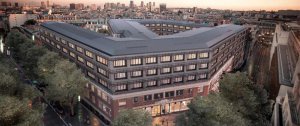Biological and bio-inspired motility at microscopic scales : locomotion by shape control
Locomotion strategies employed by unicellular organism are a rich source of inspiration for studying mechanisms for shape control. In fact, in an overwhelming majority of cases, biological locomotion can be described as the result of the body pushing against the world, by using shape change. Motion is then a result Newton’s third and second law : the world reacts with a force that can be exploited by the body as a propulsive force, which puts the body into motion following the laws of mechanics. Strategies employed by unicellular organisms are particularly interesting because they are invisible to the naked eye, and offer surprising new solutions to the question of how shape can be controlled.
Depending on the mechanisms for shape change available to the organism (or to the bio-inspired engineering device), and on the mechanical interactions with the environment (hydrodynamic interactions with a surrounding fluid, frictional interactions with a substrate, etc.), the problem gives rise to physics problems that differ in the details, but share a common general structure. Their study study is often rewarding as it results in new concepts for the possibility of engineering new materials and structures with controllable shape, such as “morphing by modulating surface shears”. This is the template employed by Euglena for its amoeboid motion, also known as metaboly [1].
In recent years, we have studied locomotion by shape control using a variety of methods : modelling, theory, and numerical simulation [1, 2, 3, 4], observations at the microscope [4,5], manufacturing of prototypes [3]. We will survey our recent findings within this stream of research.
References
[1] Arroyo, M., Heltai, L., Milan, D., and DeSimone, A. : Reverse engineering the euglenoid movement, Proceedings of the National Academy of Sciences USA, 109, 17874-17879 (2012)
[2] Arroyo, M. and DeSimone, A. : Shape control of active surfaces inspired by the movement of euglenids, J. Mech. Phys. Solids, 62, 99-112 (2014).
[3] Noselli, G. and DeSimone, A. : A robotic crawler exploiting directional frictional interactions : Experiments, numerics and derivation of a reduced model, Proc. Roy. Soc. A, 470, 20140333 (2014).
[4] Rossi, M., Cicconofri, G., Beran, A., Noselli, G. and DeSimone, A. : Kinematics of flagellar








